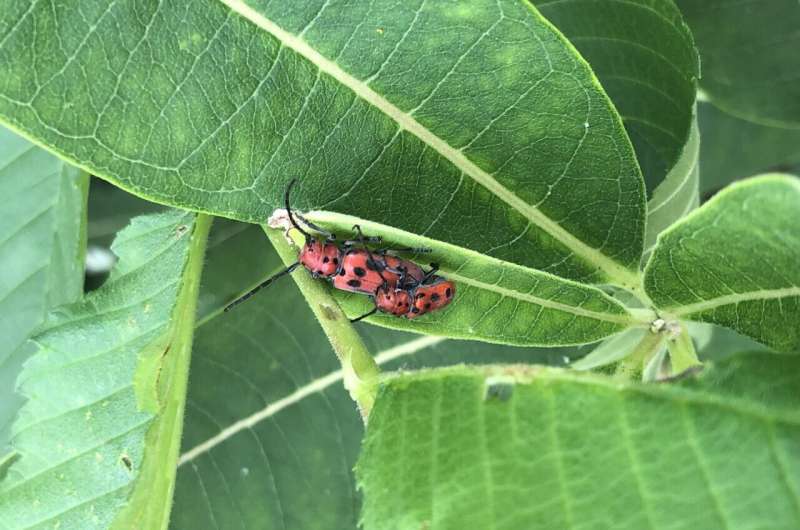The genome of the red milkweed beetle (Tetraopes tetrophthalmus) offers fascinating insights into the intricate relationship between insects and plants. This study sheds light on how the beetle has evolved to safely feed on the toxic milkweed plant, highlighting the ecological, evolutionary, and economic implications of plant-insect interactions from a genomic perspective.

Unraveling the Secrets of Specialized Herbivory
For nearly 150 years, the relationship between the red milkweed beetle and milkweed plants has captivated researchers. Now, a team of scientists has taken a groundbreaking step by sequencing and assembling the entire genome of this host-specialist beetle.
By comparing the red milkweed beetle’s genome to that of the Asian longhorned beetle, a host-generalist species, the researchers have unveiled remarkable insights into the genetic factors that enable the red milkweed beetle to safely consume the toxic milkweed plants. The study, published in the Journal of Heredity, highlights the beetle’s apparent expansion of genes from the ABC transport family, which may play a crucial role in the beetle’s ability to sequester milkweed toxins within its own tissues, offering protection against predators.
Unraveling the Evolutionary Co-Divergence of Insects and Plants
The red milkweed beetle and milkweed plants have a long-standing relationship that serves as a valuable model for understanding the intricate dance of co-evolution. The researchers found that the timing of co-evolution between the beetle and its host plant is remarkably aligned, showcasing the fascinating patterns of co-divergence that can arise between interacting species.
Milkweeds are renowned for their complex toxic cocktails, which can disrupt the balance of sodium, calcium, and potassium in the heart cells of many insects. However, the red milkweed beetle has developed an ingenious adaptation, not only resisting the toxins but also sequestering them within its own body, turning the tables on its predators.
Unlocking the Genetic Basis of Insect-Plant Interactions
The study also delved into the genetic mechanisms that underpin the red milkweed beetle’s chemosensory abilities, shedding light on how the beetle locates its host plants and potential mates. By analyzing the RNA profile of the beetle’s antennae, the researchers gained valuable insights into the transcriptomic resources available to this species.
This genomic and transcriptomic data holds immense promise for informing our understanding of the genetic factors that shape agricultural and forestry pests, as well as their ability to successfully feed on plants and evade control efforts. The findings also highlight the remarkable diversity of genes and genomes that nature has created, offering potential solutions for addressing challenges in agriculture, forestry, and human health.
